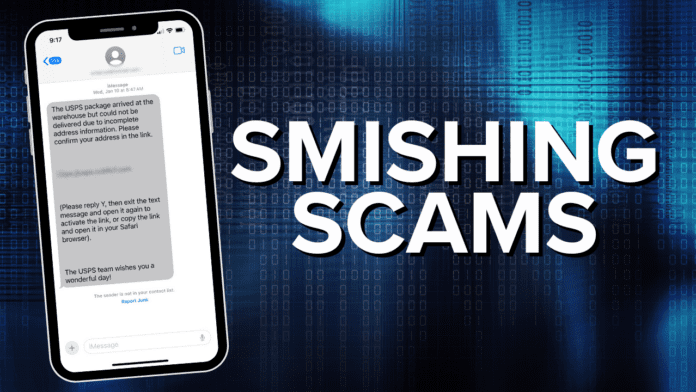As Thanksgiving comes and goes and we enter the Christmas season, scammers may try to steal your holiday cheer (and personal information) by interfering with the United States Postal Service. The United States Postal Inspection Service (USPIS) recently issued an alert warning people of common scams – and yes, local residents in Lake County have already experienced some of these.
Counterfeit postage stamps are becoming increasingly common, with scammers selling them on social media, e-commerce sites, and other websites. They are often sold in bulk at a discount of 20-50% of their face value, according to the USPIS. The significant discount is a key way to tell the stamps are counterfeit. USPIS recommends purchasing stamps only from Approved Postal Providers who have a sale agreement with the United States Postal Service, or from USPS themselves. The most common counterfeit stamp is the Flag Stamp.
Phishing, Vishing, Quishing, and Smishing are not Dr. Seuss characters, but instead terms used for identity fraud scams. One phishing scam is fake USPS emails with the subject line “Delivery Failure Notification”. These emails contain links or attachments that release a virus which steals personal information. “The U.S. Postal Service does not notify customers of package delivery attempts, or request personal information, via email,” USPIS said in a statement. Two key signs to recognize a phishing attempt are poor grammar and spelling or a request for immediate action. USPIS requests that spam emails be forwarded to spam@uspis.gov, and then deleted.
Vishing, otherwise known as voice phishing, is a form of phishing using a phone call or voicemail. Vishing comes from an unknown number, and asks to verify personal information, such as login details, credit card information, or banking credentials. Scammers may impersonate postal inspectors or law enforcement, and threaten legal action or arrest if you do not comply. Scammers can also make the number they’re calling from look legitimate. Postal inspectors will never ask for money or threaten you with arrest for not providing personal information over phone, text, or email. USPIS shared the following advice: “If you receive a communication from someone impersonating a Postal Inspector, please send an email to the USPIS Cyber Crime Unit at ISCCU@ usps.gov. Please include your name and contact information, the name and any contact information used by the imposter, and a summary of the phone call or copy of the actual communication with the imposter.”
Quishing is phishing using a QR code. The QR code may look legitimate, but will take you to a scammer’s website, which may also look legitimate. The important thing to remember is to never give out personal information, and beware of unfamiliar websites.
Finally, smishing is phishing via text message. The message will contain a link saying that your USPS delivery is waiting for a response from you. Any legitimate message from the USPS will not contain a link.
Moving out of the realm of cyber crime, thieves commonly dubbed “porch pirates” may be more active this holiday season with an increase in package delivery, including packages containing far more valuable things than your monthly order of dog food. The USPIS shares the following tips to avoid losing mail and packages: promptly pickup mail, inquire about overdue mail, don’t send cash, arrange for prompt pickup, use the Hold for PickUp option, request signature confirmation, and if you move, file a change of address. From 2018 to 2023, postal inspectors arrested almost 9,000 suspects for stealing mail and packages.
Beware of scams, and enjoy a less stressful holiday season knowing you can recognize the signs of phishing.



